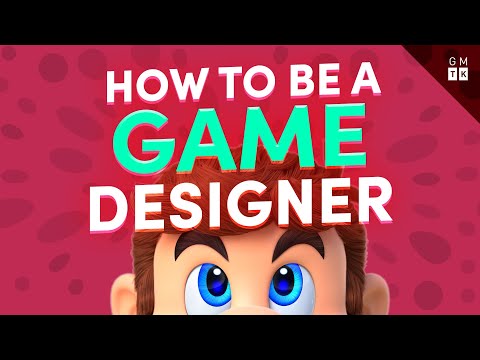Get Paid to Play: Game Designer Job Description and Salary

Game Designer Job Description Template
Game Designer Job Description A game designer is responsible for creating and developing the concept, mechanics, and overall design of a video game. They are involved in every stage of the game development process, from initial idea generation to final production. Their main goal is to create an engaging and immersive gaming experience for players. The role of a game designer requires a combination of creativity, technical skills, and a deep understanding of gameplay mechanics. They collaborate with other team members, such as artists, programmers, and producers, to bring their vision to life. They also conduct extensive research on market trends, player preferences, and competitor analysis to ensure that the game meets the expectations of the target audience. One important aspect of a game designer’s job is creating the game’s narrative and characters. They develop compelling storylines, design memorable characters, and create unique worlds for players to explore. Additionally, they focus on game mechanics, including level design, game progression, and balancing challenges to provide an enjoyable and challenging experience. In conclusion, a game designer plays a crucial role in the development of video games. Their creativity, technical skills, and understanding of player preferences are essential in creating successful and engaging gaming experiences. By combining storytelling, gameplay mechanics, and market research, they contribute to the overall success of a game.Game Designer Responsibilities
Game Designer Requirements
How Much Does A Game Designer Make?
Game Designer Salary
| Level | Years of Experience | Salary |
|---|---|---|
| Entry Level | 0-2 years | $50,000 – $70,000 |
| Mid Level | 3-5 years | $70,000 – $100,000 |
| Senior Level | 6+ years | $100,000 – $150,000 |
A game designer’s salary varies depending on their level of experience. Entry-level game designers with 0-2 years of experience can expect to earn between $50,000 and $70,000 annually. Mid-level game designers with 3-5 years of experience typically earn between $70,000 and $100,000 per year. Senior game designers with 6 or more years of experience can earn between $100,000 and $150,000 annually.
Game Designer Salaries by Country
Top Paying Countries for Game Designer
| Country | Average Salary (USD) |
|---|---|
| United States | $90,270 |
| Canada | $70,780 |
| Australia | $67,430 |
| United Kingdom | $57,890 |
| Germany | $55,610 |
According to recent data, the top paying countries for game designers are the United States, Canada, Australia, United Kingdom, and Germany. In the United States, game designers earn an average salary of $90,270 per year. Canada follows with an average salary of $70,780, while Australia offers an average of $67,430. In the United Kingdom, game designers make around $57,890 on average, and in Germany, the average salary is $55,610. These countries provide lucrative opportunities for game designers to earn a competitive income while pursuing their passion in the gaming industry.
A video on the topic Game Designer
Video Source : Game Maker’s ToolkitInterview Questions for Game Designer
1. What are the key skills and qualifications required to become a game designer?
To become a game designer, you need a combination of technical and creative skills. Key skills include proficiency in programming languages, knowledge of game development software, strong problem-solving abilities, excellent communication skills, and a creative mindset. Qualifications such as a degree in game design, computer science, or a related field can also be beneficial.
2. Can you explain the typical game design process?
The game design process typically involves several stages. It starts with concept development, where ideas for the game are brainstormed. Then, a game design document is created, outlining the game mechanics, story, characters, and other key elements. Next, the game is prototyped and playtested to gather feedback and make necessary adjustments. After that, the actual development of the game begins, including coding, asset creation, and level design. Finally, the game goes through bug testing and quality assurance before being released.
3. How do you approach balancing gameplay difficulty?
Balancing gameplay difficulty is crucial to ensure an enjoyable experience for players. I approach it by playtesting the game extensively and gathering feedback from different types of players. This helps me identify areas that might be too difficult or too easy. I then make adjustments to the game mechanics, level design, or enemy AI to achieve a balanced difficulty curve. It’s important to consider the skill level of both casual and experienced players when balancing the gameplay.
4. How do you incorporate storytelling into game design?
Storytelling in game design can be incorporated through various means. One approach is to create a compelling narrative with well-developed characters, dialogues, and cutscenes. Another approach is to design the gameplay mechanics in a way that the player’s actions and choices impact the story. Additionally, environmental storytelling, through level design and visual cues, can also enhance the narrative. It’s important to strike a balance between gameplay and storytelling elements to create an immersive and engaging experience for players.
5. How do you handle the challenges of working within a team of developers?
Working within a team of developers requires effective communication and collaboration skills. I ensure that everyone on the team has a clear understanding of their roles and responsibilities. Regular meetings and status updates help in keeping everyone on the same page. I also encourage open and constructive feedback, allowing team members to share their ideas and concerns. Resolving conflicts professionally and being adaptable to changes are also important when working in a team environment.
6. How do you approach designing user interfaces for games?
Designing user interfaces for games involves creating intuitive and visually appealing interfaces that enhance the gameplay experience. I start by researching and understanding the target audience to design interfaces that cater to their preferences and expectations. I focus on simplicity and clarity, ensuring that the interface elements are easy to understand and interact with. Prototyping and playtesting the interface helps in identifying any usability issues and making necessary improvements.
7. How do you stay updated with the latest trends and advancements in game design?
To stay updated with the latest trends and advancements in game design, I actively participate in industry events, conferences, and workshops. I also follow influential game designers, industry publications, and online communities dedicated to game development. Engaging in personal projects and experimenting with new technologies and tools helps me explore and adapt to emerging trends. Additionally, networking with other professionals in the field and discussing ideas and experiences also contributes to staying updated.
8. How do you approach playtesting and gathering player feedback?
I approach playtesting by recruiting a diverse group of players who represent the target audience. Their feedback is crucial in identifying areas that need improvement or adjustment. I observe their gameplay sessions and record their experiences and opinions. Surveys and questionnaires are also used to gather structured feedback. Additionally, I encourage players to provide their feedback through online forums, social media, or direct communication. Analyzing this feedback helps in making informed decisions and refining the game design.
9. How do you ensure the balance between innovation and market demand in game design?
Ensuring the balance between innovation and market demand involves conducting thorough market research. I analyze current market trends, player preferences, and competitor games to understand the market demand. Simultaneously, I strive to bring innovative ideas and unique gameplay mechanics to stand out from the competition. It’s important to strike a balance between creating something new and appealing to players while also meeting their expectations and demands.
10. Can you describe a challenging game design project you have worked on and how you overcame the challenges?
One challenging game design project I worked on involved designing a multiplayer online battle arena (MOBA) game with unique game mechanics. The main challenge was balancing the different character abilities to ensure fair gameplay. I overcame this challenge by extensively playtesting the game with a diverse group of players. Their feedback helped in identifying overpowered or underpowered abilities, and I made adjustments accordingly. Iterative prototyping and continuous balancing allowed me to achieve a more balanced and enjoyable gameplay experience.






